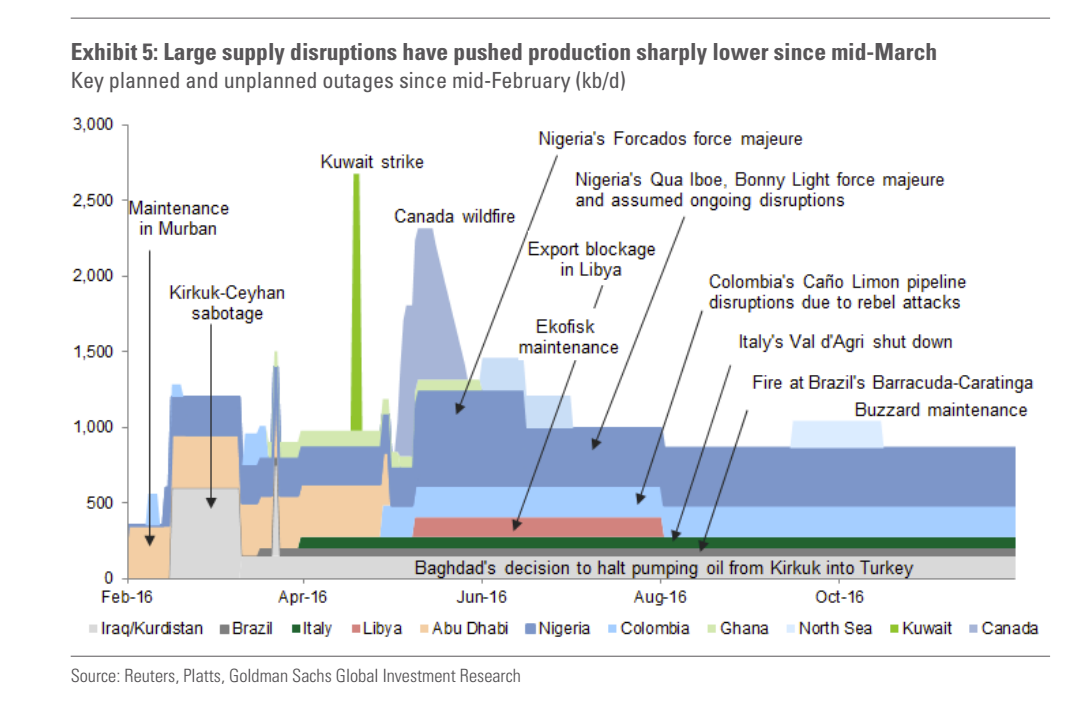Analyzing Trump's Stance: The US And Canadian Trade Interdependence

Table of Contents
Trump's Trade Policies and their Impact on US-Canada Relations
NAFTA Renegotiation (USMCA): A New Chapter in Trade
The renegotiation of the North American Free Trade Agreement (NAFTA) into the United States-Mexico-Canada Agreement (USMCA) was a defining moment in Trump's trade policy. Key changes introduced significant alterations to the previous agreement, impacting various sectors:
- Dairy: The USMCA granted increased access to the Canadian dairy market for US producers, a contentious issue that led to significant negotiations.
- Lumber: Dispute resolution mechanisms concerning softwood lumber were modified, aiming to reduce trade conflicts but sparking ongoing debate.
- Automotive: New rules of origin for automobiles were implemented, requiring a higher percentage of North American content to qualify for tariff-free trade. This had implications for auto manufacturing jobs and supply chains in all three countries.
The political climate surrounding the renegotiation was fraught with tension, reflecting the protectionist sentiment driving Trump's agenda. While some lauded the USMCA as an improvement over NAFTA, others argued that it didn't go far enough to address lingering trade imbalances. Economically, the impact was mixed, with some sectors benefiting from increased market access, while others faced challenges adapting to the new rules.
Tariffs and Trade Disputes: A Test of Resilience
Trump's administration imposed tariffs on various Canadian goods, including lumber, steel, and aluminum, citing national security concerns. These actions sparked retaliatory measures from Canada, escalating trade tensions.
- Lumber Tariffs: The US repeatedly imposed tariffs on Canadian softwood lumber, a longstanding point of contention between the two nations.
- Steel and Aluminum Tariffs: These tariffs, justified on national security grounds, disrupted supply chains and led to increased costs for US manufacturers reliant on Canadian steel and aluminum.
- Canadian Retaliation: Canada responded with tariffs on a range of US goods, impacting sectors like agriculture and manufactured products.
The economic consequences of these disputes included increased prices for consumers, reduced trade volumes, and uncertainty for businesses operating across the border. Both countries experienced economic slowdowns in certain sectors as a result.
Impact on Specific Industries: A Sector-by-Sector Analysis
Trump's trade policies had a varied impact across different sectors:
- Agriculture: Canadian farmers faced challenges due to tariffs on agricultural products, while some US agricultural sectors benefited from increased access to the Canadian market.
- Automotive: The automotive industry faced disruptions due to the changes in rules of origin under USMCA, leading to adjustments in manufacturing processes and supply chains.
- Energy: The energy sector experienced fluctuations, with some energy exports affected by trade tensions.
Detailed data and statistics on employment and investment in each sector would be required for a comprehensive analysis, highlighting the complex and multifaceted consequences of these policies.
The Interdependence of the US and Canadian Economies
Supply Chain Integration: A Tightly Knit Web
The US and Canadian economies are deeply intertwined through extensive supply chain integration. Numerous industries rely on cross-border flows of goods and services.
- Automotive Manufacturing: Auto parts frequently cross the border multiple times during the manufacturing process.
- Energy: Canada is a significant supplier of energy resources to the US.
- Agriculture: Food products frequently cross the border for processing and distribution.
The vulnerability of these integrated supply chains to trade disruptions became starkly apparent during periods of trade tension. Disruptions caused delays, increased costs, and production setbacks.
Cross-border Investment: A Foundation of Shared Prosperity
Significant cross-border investment flows exist between the US and Canada. Trade disputes create uncertainty and risk for investors.
- Foreign Direct Investment (FDI): Both countries are major recipients and sources of FDI. Trade disputes can negatively impact investor confidence and reduce FDI flows.
- Portfolio Investment: Fluctuations in exchange rates and trade policies can affect the returns on portfolio investments.
Understanding the impact of trade policies on FDI is crucial for both countries' economic growth. A stable and predictable trade environment is vital for attracting and retaining investment.
Labor Mobility and Migration: A Shared Workforce
The movement of labor across the US-Canada border contributes significantly to both economies.
- Seasonal Workers: Many Canadians work seasonally in the US, and vice-versa, particularly in agriculture and tourism.
- Skilled Workers: The free movement of skilled workers enhances both countries' competitiveness.
Trade policies can influence migration patterns, impacting the availability of labor in specific sectors and potentially affecting economic output.
Long-Term Implications of Trump's Trade Stance
Shifting Geopolitical Dynamics: A Ripple Effect
Trump's trade policies had a broader impact on North American and global trade relations.
- USMCA and Beyond: The renegotiation of NAFTA impacted relations with Mexico and influenced trade discussions with other countries.
- Global Trade Landscape: Trump's protectionist approach challenged the existing multilateral trading system and raised concerns about global trade stability.
The potential for future trade disputes and collaborations will depend on the evolving geopolitical landscape and the approach taken by subsequent administrations.
Economic Resilience and Diversification: Adapting to Change
Both the US and Canada have taken steps to enhance economic resilience and reduce reliance on each other.
- Trade Diversification: Both countries have explored opportunities to diversify their trade partnerships, reducing dependence on the bilateral relationship.
- Investment in Domestic Industries: Both countries have implemented policies to strengthen domestic industries and reduce vulnerability to external shocks.
The long-term effects on economic growth and development will depend on the success of these diversification efforts and the broader global economic environment.
Conclusion: Analyzing Trump's Stance: The US and Canadian Trade Interdependence – A Lasting Legacy
Trump's trade policies significantly impacted the US-Canada relationship, creating both challenges and opportunities. The deep interdependence of the two economies was tested, but both countries demonstrated resilience. The renegotiation of NAFTA, tariff disputes, and their impacts on various sectors underscored the complex interplay of economic and political factors. To fully understand the long-term ramifications, we must continue analyzing Trump's stance on US-Canada trade interdependence and its effects on North American economic stability. Continue researching and engaging in discussions about the future of USMCA and the evolving global trade landscape. Further reading on the long-term economic effects of these policies is highly recommended.

Featured Posts
-
 New Android Design Improvements And Updates
May 15, 2025
New Android Design Improvements And Updates
May 15, 2025 -
 Dodger Offense Falters In Loss To Cubs
May 15, 2025
Dodger Offense Falters In Loss To Cubs
May 15, 2025 -
 Analyzing Trumps Oil Price Stance Goldman Sachs Social Media Research
May 15, 2025
Analyzing Trumps Oil Price Stance Goldman Sachs Social Media Research
May 15, 2025 -
 Vont Weekend 2025 Four Days In Pictures 97 3 Kiss Fm
May 15, 2025
Vont Weekend 2025 Four Days In Pictures 97 3 Kiss Fm
May 15, 2025 -
 Tampa Bay Rays Sweep Padres In Commanding Fashion
May 15, 2025
Tampa Bay Rays Sweep Padres In Commanding Fashion
May 15, 2025
Latest Posts
-
 Top 20 Vratarey N Kh L Bobrovskiy V Pley Off
May 15, 2025
Top 20 Vratarey N Kh L Bobrovskiy V Pley Off
May 15, 2025 -
 Karolina Gromit Vashington V Serii Pley Off N Kh L Itogi Matcha
May 15, 2025
Karolina Gromit Vashington V Serii Pley Off N Kh L Itogi Matcha
May 15, 2025 -
 Pley Off N Kh L Vashington I Monreal Protivostoyanie Ovechkina I Demidova
May 15, 2025
Pley Off N Kh L Vashington I Monreal Protivostoyanie Ovechkina I Demidova
May 15, 2025 -
 Stanley Cup Playoffs Nhl Partners With Ndax In Canada
May 15, 2025
Stanley Cup Playoffs Nhl Partners With Ndax In Canada
May 15, 2025 -
 Kh K Karolina Sokrushitelno Pobedil Vashington V Pley Off N Kh L
May 15, 2025
Kh K Karolina Sokrushitelno Pobedil Vashington V Pley Off N Kh L
May 15, 2025
